7th Chart of the coast of France from the Iles de Bretah to Port Louis.
Epreuve originale réalisée en 1759. J. Jefferys graveur.
Beaux coloris aquarelle.
Très bon état.
Format feuille : 36 x 24 cm.
Format gravure : 28,5 x 21 cm.
Vous pouvez consulter l’ensemble des cartes et gravures disponibles sur votre région en cliquant sur le lien de notre site internet spécialisé en archives anciennes géographiques :
https://cartes-livres-anciens.com/categorie-produit/cartes-geographiques-anciennes-original-antique-maps/france/languedoc-roussillon/
Règlement sécurisé par carte bancaire sur notre site internet en cliquant sur le lien :
https://cartes-livres-anciens.com/produit/cartes-geographiques-anciennes-original-antique-maps/france/languedoc-roussillon/carte-marine-ancienne-dagde/
Toutes nos cartes et gravures sont accompagnées d’un certificat d’authenticité.
Thomas Jefferys (1695 – 20 novembre 1771) était l’un des éditeurs de cartes et graveurs les plus importants et les plus prolifiques de son époque.
Jefferys est né à Birmingham et a été apprenti chez le graveur Emmanuel Bowen en 1735. Plus tard, dans les années 1740, il a gravé plusieurs cartes pour le périodique populaire Gentleman’s Magazine.
Vers 1740, Jefferys put enfin se lancer en affaires et, en 1746, fut nommé « géographe de Fredrick, prince de Galles », qui peu après se traduisit par le poste de « cartographe royal du roi George III ». Jefferys s’est d’abord spécialisé dans la compilation et la regravure des œuvres des cartographes antérieurs dans des ensembles cartographiques plus cohérents. Plus tard, alors qu’il n’était pas salarié, la nomination de Jefferys en tant que « cartographe royal » garantissait un accès préférentiel au matériel cartographique le plus récent disponible, lui permettant de produire des cartes nouvelles et mises à jour d’une précision exceptionnelle. Il est surtout connu pour ses cartes des Amériques, en particulier l’Atlas américain publié à titre posthume en 1775, qui comprenait certaines des plus belles et des plus importantes cartes de l’époque coloniale tardive de l’Amérique jamais réalisées. Malgré son histoire prolifique dans l’édition, ses nominations royales et sa renommée internationale dans l’édition, Jefferys a vécu la majeure partie de sa vie dans une situation économique difficile.
Il a été renfloué de la faillite par Robert Sayer lors de la production de l’Atlas américain. En fin de compte, Jefferys est décédé subitement avec très peu à son nom. Néanmoins, son héritage cartographique a survécu, et même après sa mort en 1771, nombre de ses cartes importantes ont continué à être publiées et republiées par Sayer et Bennet, Conrad Lotter, Georges Louis Le Rouge, Laurie et Whittle, et d’autres. Beaucoup attribuent certaines des meilleures cartes de Jefferys au génie cartographique irlandais coloré et criminel Braddock Mead (John Green, vers 1688 – 1757), qui est considéré comme le « secret de Jefferys ». Jefferys a été remplacé par son fils, également Thomas, qui a eu peu de succès en tant que cartographe et s’est finalement associé avec, puis a vendu son stock et ses assiettes à William Faden – le véritable héritier de Jefferys.
William Faden (11 juillet 1749 – 21 mars 1836) était un cartographe et éditeur de cartes écossais de la fin du XVIIIe siècle. Faden est né à Londres. Son père, William MacFaden, était un imprimeur londonien bien connu et l’éditeur de The Literary Magazine. Pendant la rébellion jacobite (1745 – 1746), MacFaden a changé son nom de famille en Faden, pour éviter le sentiment anti-écossais. Faden a fait son apprentissage auprès du graveur James Wigley (1700 – 1782), obtenant sa liberté en 1771 – la même année que Thomas Jefferys Sr. est décédé.
Alors que Thomas Jefferys Sr. était un cartographe important et magistral, il était un terrible homme d’affaires et son fils, Jefferys Jr. avait peu d’intérêt à s’appuyer sur l’héritage de son père. MacFaden, reconnaissant peut-être une opportunité, a acquis pour son fils un partenariat dans la société Jefferys, qui s’est ensuite échangée sous le nom de « Faden and Jefferys ». Jefferys Jr. a également hérité du titre de Jefferys Sr., « géographe du roi et du prince de Galles ». Avec peu d’intérêt pour la cartographie ou l’édition de cartes, Jefferys Jr. a de plus en plus pris un siège arrière à Faden, se retirant complètement de la gestion quotidienne, tout en conservant son enjeu finical, en 1776.
La guerre d’indépendance américaine (1775 – 1783) s’est avérée être une période faste pour le jeune « géographe du roi », qui a tiré parti des documents existants et des cartes manuscrites inédites auxquelles il avait accès via sa nomination officielle, pour publier une multitude de cartes importantes, à la fois pour un usage officiel en temps de guerre et pour le public curieux. Cette période de prospérité a jeté les bases financières de Faden, qui en 1783, à la fin de la guerre, a acquis la pleine propriété de l’entreprise et a supprimé l’empreinte Jefferys. En 1801, il grave et publie les premières cartes pour l’Ordonance Survey britannique.
En 1822, Faden publie plus de 350 cartes, atlas et plans militaires. Il a pris sa retraite en 1823, vendant ses places à James Wyld Sr. Faden est décédé en 1836.
Map of the town and mole of Agde with the Fort Brescou. 7th Chart of the coast of France from the Iles de Bretah to Port Louis. Original proof made in 1759. J. Jefferys engraver. Beautiful watercolor colors. Very good state. Sheet size: 36 x 24 cm. Engraving format: 28.5 x 21 cm. You can consult all the maps and engravings available in your region by clicking on the link of our website specializing in ancient geographical archives: https://cartes-livres-anciens.com/categorie-produit/cartes-geographiques-anciennes -original-antique-maps/france/languedoc-roussillon/ Secure payment by credit card on our website by clicking on the link: https://cartes-livres-anciens.com/produit/cartes-geographiques-anciennes-original- antique-maps/france/languedoc-roussillon/carte-marine-ancienne-dagde/ All our maps and engravings are accompanied by a certificate of authenticity. Thomas Jefferys (1695 – November 20, 1771) was one of the most important and prolific map publishers and engravers of his time. Jefferys was born in Birmingham and apprenticed to the engraver Emmanuel Bowen in 1735. Later, in the 1740s, he engraved several maps for the popular periodical Gentleman's Magazine. Around 1740 Jefferys was finally able to go into business, and in 1746 was appointed 'Geographer to Fredrick, Prince of Wales', which shortly afterwards translated to the post of 'Royal Cartographer to King George III'. Jefferys first specialized in compiling and re-engraving the works of earlier cartographers into more cohesive cartographic sets. Later, while not on salary, Jefferys' appointment as "Royal Cartographer" guaranteed preferential access to the most recent cartographic material available, enabling him to produce new and updated maps of a exceptional precision. He is best known for his maps of the Americas, particularly the American Atlas published posthumously in 1775, which included some of the finest and most important late colonial maps of America ever made. Despite his prolific publishing history, royal appointments, and international publishing fame, Jefferys lived most of his life in a difficult economic situation. It was bailed out of bankruptcy by Robert Sayer during the production of The American Atlas. Ultimately, Jefferys died suddenly with very little to his name. Nevertheless, his cartographic legacy survived, and even after his death in 1771 many of his important maps continued to be published and republished by Sayer and Bennet, Conrad Lotter, Georges Louis Le Rouge, Laurie and Whittle, and others. Many attribute some of Jefferys' best maps to the colorful and criminal Irish cartographic genius Braddock Mead (John Green, c. 1688 – 1757), who is considered "Jefferys' secret". Jefferys was succeeded by his son, also Thomas, who had little success as a cartographer and eventually partnered with, then sold his stock and plates to William Faden – Jefferys' true heir. William Faden (July 11, 1749 – March 21, 1836) was a Scottish cartographer and map-maker of the late 18th century. Faden was born in London. His father, William MacFaden, was a well-known London printer and publisher of The Literary Magazine. During the Jacobite Rising (1745 – 1746), MacFaden changed his surname to Faden, to avoid anti-Scottish sentiment. Faden apprenticed with engraver James Wigley (1700 – 1782), gaining his freedom in 1771 – the same year Thomas Jefferys Sr. died. While Thomas Jefferys Sr. was an important and masterful cartographer, he was a terrible businessman and his son, Jefferys Jr. had little interest in building on his father's legacy. MacFaden, perhaps recognizing an opportunity, acquired a partnership in the Jefferys company for his son, which later traded as "Faden and Jefferys". Jefferys Jr. also inherited the title of Jefferys Sr., "Geographer to the King and Prince of Wales". With little interest in cartography or map editing, Jefferys Jr. increasingly took a back seat to Faden, retiring from day-to-day management altogether, though retaining his final stake, in 1776. The War American independence (1775 – 1783) turned out to be a prosperous period for the young “king’s geographer”, who took advantage of existing documents and unpublished manuscript maps to which he had access via his official appointment, to publish a multitude of important maps, both for official wartime use and for the curious public. This period of prosperity laid the financial foundation for Faden, who in 1783, at the end of the war, acquired full ownership of the business and removed the Jefferys imprint. In 1801, he engraved and published the first maps for the British Ordinance Survey. In 1822, Faden published more than 350 maps, atlases and military plans. He retired in 1823, selling his places to James Wyld Sr. Faden died in 1836.











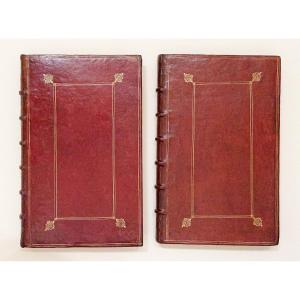

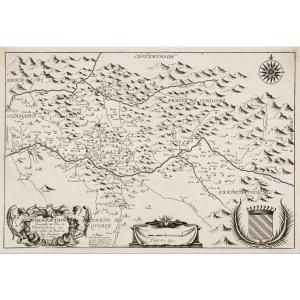

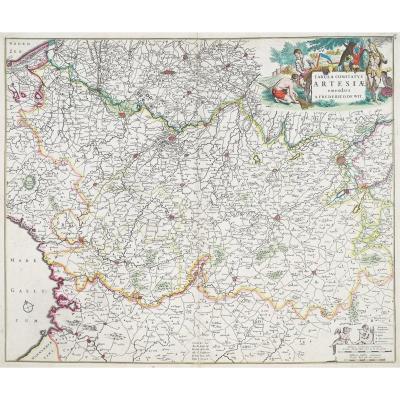
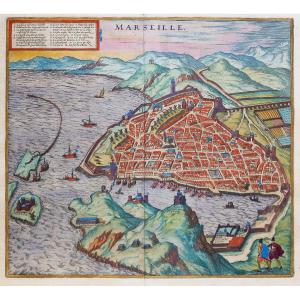




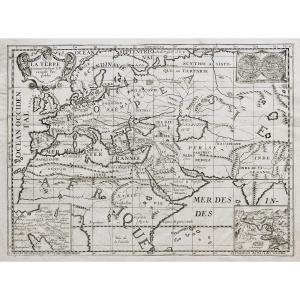








 Le Magazine de PROANTIC
Le Magazine de PROANTIC TRÉSORS Magazine
TRÉSORS Magazine Rivista Artiquariato
Rivista Artiquariato